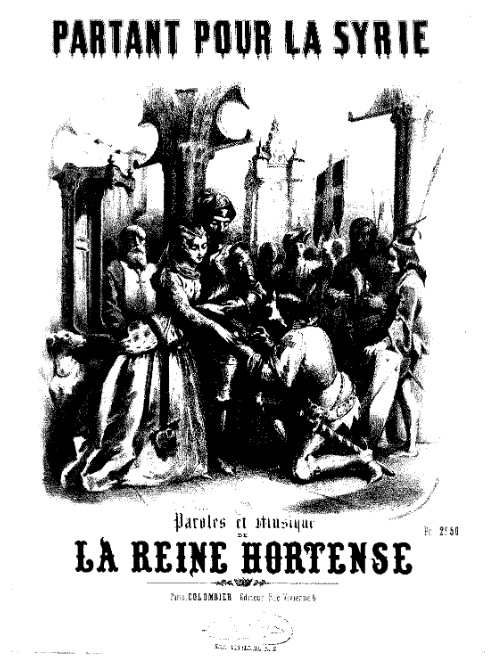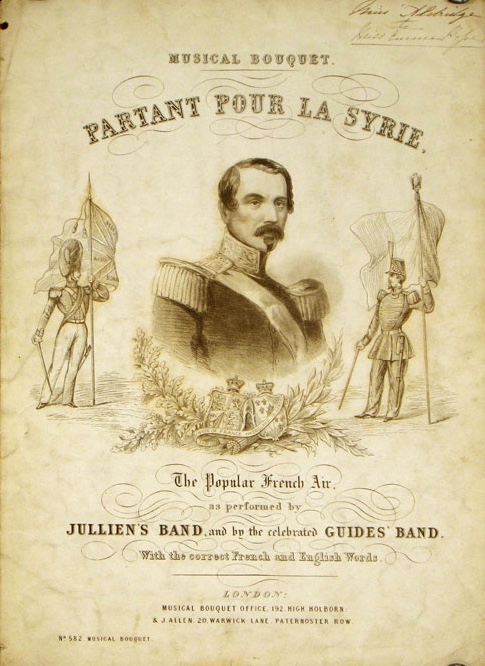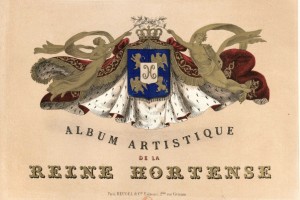Hortense was an exceptionally creative person. At Madame Campan’s Institute she was fortunate to have Isabey for an art instructor and Jadin for music. Hortense painted and composed songs throughout her life, but she is most known for the song “Partant pour la Syrie,” which remains popular today. You can hear a lovely performance of this song here, by a singer wearing a gown very much like one Hortense might have worn.

Hortense’s creative process
How did this song come to be written? What was Hortense’s creative process? There are hints in something she wrote:
At Constance, I had few books and no collection of poems in which I could find words. I once made some verses for my brother; I tried to compose, but the obligation to find a rhyme, to confine myself to a measure, soon tired me and after a few bad verses, I was left to the music. (See the French original below.)
This gives us an idea about Hortense’s creative process: she would write melody, and search in books for the verse.
Partent pour la Syrie
She wrote that she wrote “Partent pour la Syrie” at Malmaison, while Josephine was playing tric-trac, an old form of backgammon. The date she composed it isn’t known. One theory is that Hortense wrote the melody, and that the words were created by Alexandre de Laborde in or about 1807.
Under the Restoration (when Napoleon was overthrown and monarchy restored), “Partent pour la Syrie” became the rallying song for those in support of Napoleon. Hortense’s son Napoleon III made it a national hymn.
Hortense as composer
As an adult, Hortense composed many songs, then called “Romances.”
You can “leaf” through this lovely book online: here.
A Constance, je n’avais que peu de livres et aucun recueil de poésies où je pusse trouver des paroles. J’avais fait autrefois quelques couplets pour mon frère; j’essayai d’en composer, mais l’obligation de trouver une rime, de me renfermer dans une mesure me fatigua bientôt et, après quelques mauvais vers, j’en restai à la musique.
—from “La reine Hortense et la musique” by Marie-Claude Chaudonneret in La Reine Hortense, Une femme artiste, a publication made for the 1993 exposition at Malmaison, France.



